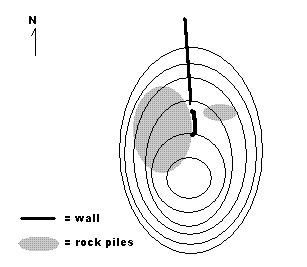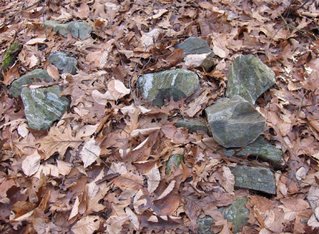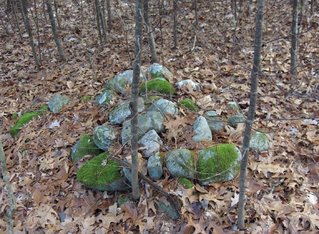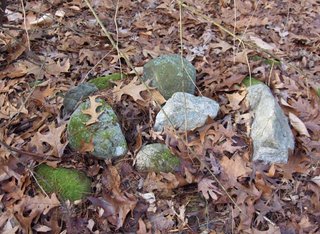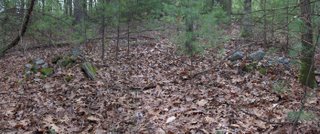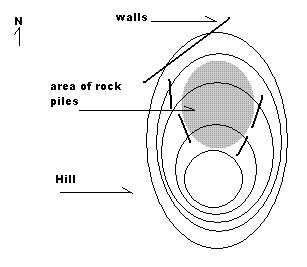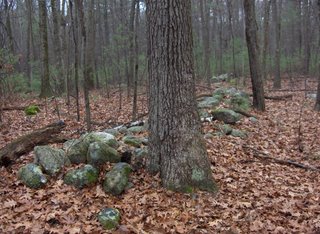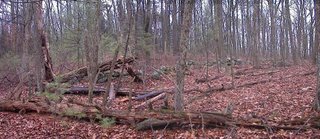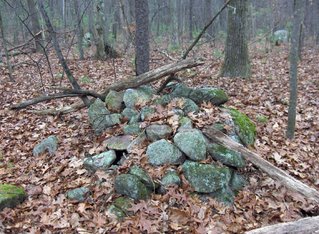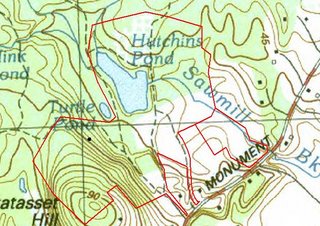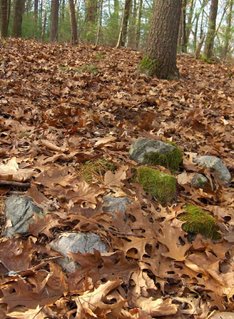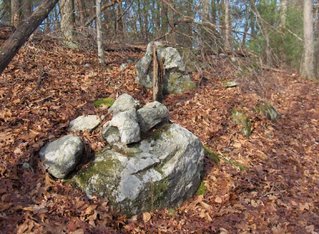
NEARA took a field trip to the Clarence Fahnestock Memorial State Park to look at the cairns there. Ann Banks (who was the NEARA coordinator for Massachusetts) sent me some photos and I am re-printing a portion of Robert Buchanan's trail map [I was not able to contact Mr. Buchanan to ask permission to use his map, so I hope it is OK to use a small part of it.] Cairns are indicated on the map by small circles with a dot in the center; stone walls are indicated by straight black lines with dots.
Here are some of the pictures Ann took:


 Here is an example of a stone wall joining boulders. This is the kind of feature which Norman Muller emphasizes and which we have also seen examples of from Jim Porter and Larry Harrop. In fact this site is very reminiscent of the places they show from Rhode Island.
Here is an example of a stone wall joining boulders. This is the kind of feature which Norman Muller emphasizes and which we have also seen examples of from Jim Porter and Larry Harrop. In fact this site is very reminiscent of the places they show from Rhode Island. Also here is a short segment of wall, something I have been noticing lately at some of the sites I reported this week.
Also here is a short segment of wall, something I have been noticing lately at some of the sites I reported this week. So, I hope to pay more attention if not to all walls near a site at least to these short segments. Looking more carefully at the map above, there seem to be lots of short segments like this at the site.
So, I hope to pay more attention if not to all walls near a site at least to these short segments. Looking more carefully at the map above, there seem to be lots of short segments like this at the site.





